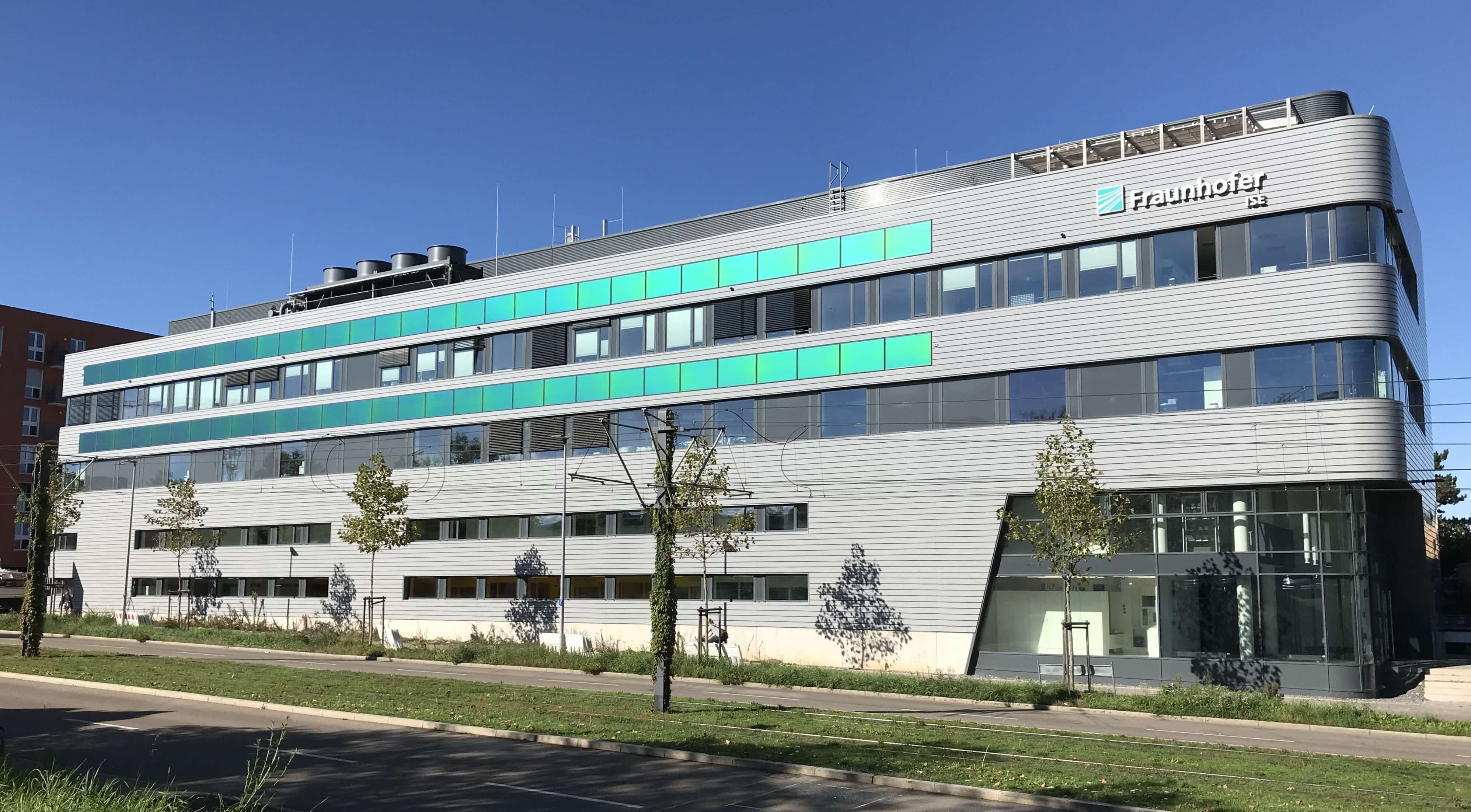First Green Solar Modules Integrated into Façade of the Center for High Efficiency Solar Cells
Sixty photovoltaic (PV) solar modules with a green MorphoColor® structural layer have recently been added to the façade of the Center for Highly Efficient Solar Cells at the Fraunhofer Institute for Solar Energy Systems ISE in Freiburg. The pilot project for building-integrated photovoltaics (BIPV) will supply the research institute with approximately 11 megawatt hours of solar electricity per year. The MorphoColor® technology developed by the research institute makes it possible to color the glass of the PV modules, while maintaining at least 90 percent of the module efficiency. The integrated photovoltaic system can either set colored accents on the building façade, as in this example, or visually blend into the building, for example, as brick red-colored PV modules on the roof.

In addition to roofs, other large surfaces already existing on buildings are also suitable for the installation of photovoltaic modules. "Integrated PV modules must be designed to aesthetically meet the requirements of the cityscape and the building architecture,” says Dr. Harry Wirth, division director of Photovoltaic Modules and Power Plants at Fraunhofer ISE. "The potential of building-integrated PV is huge: Considering roofs and facades together, we calculate a technical potential of 1,000 gigawatts peak in Germany. That is twice the rated power that is roughly needed for the energy transition."
Fraunhofer ISE is conducting intensive research on building-integrated photovoltaics. The BIPV modules with patented MorphoColor® structural layer, which were specially manufactured in green for the pilot project, can now undergo intensive testing in the practice in the façade of the new laboratory building. "To record the real irradiation data, we have installed sensors on the façade. At the same time, we measure the generated current and voltage of the modules as well as the AC power behind the inverter. Based on the measured irradiation values, we can calculate the expected yield and compare and evaluate it with the metrologically determined yield of the BIPV system," says Dr. Frank Ensslen, member of the project group at Fraunhofer ISE.
For the pilot installation on a publicly accessible facade, the research team adapted the module components, or rather the entire BIPV system, to fulfill the building code regulations. Among other things, they developed a coordinated, electrotechnical safety concept for the fire protection requirements. The findings have been incorporated into the BIPV guidelines of the state of Baden-Württemberg (in German).
The MorphoColor® color layer is a photonic structure in which an interference layer is combined with a geometrically structured substrate in such a way that a narrow-band reflection peak results. The layer reflects only a specific color and allows the rest of the sunlight to pass through virtually undisturbed. The design is inspired by the color layer on the wings of the Morpho butterfly, whose intense blue wings create an angularly stable color impression over a wide range. A wide range of colors can be realized through this technology. Due to the narrow-band nature of the reflection, the color coating reduces the efficiency of the module by significantly less than 10 percent relative, compared to an uncoated module. MorphoColor® modules therefore deliver at least 90 percent of the yields that an ordinary module would deliver in the same place.
Last modified: